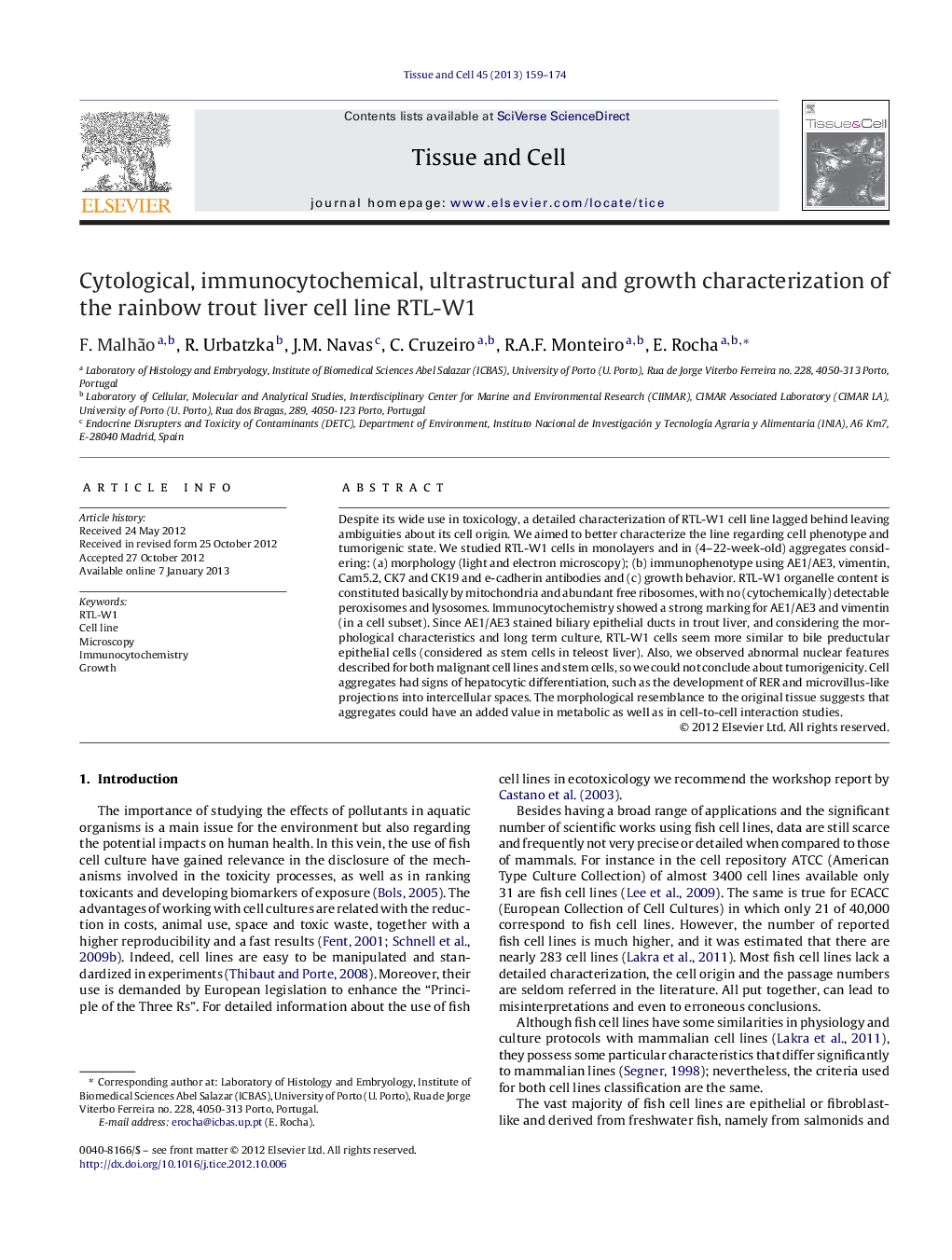| Article ID | Journal | Published Year | Pages | File Type |
|---|---|---|---|---|
| 2203623 | Tissue and Cell | 2013 | 16 Pages |
Despite its wide use in toxicology, a detailed characterization of RTL-W1 cell line lagged behind leaving ambiguities about its cell origin. We aimed to better characterize the line regarding cell phenotype and tumorigenic state. We studied RTL-W1 cells in monolayers and in (4–22-week-old) aggregates considering: (a) morphology (light and electron microscopy); (b) immunophenotype using AE1/AE3, vimentin, Cam5.2, CK7 and CK19 and e-cadherin antibodies and (c) growth behavior. RTL-W1 organelle content is constituted basically by mitochondria and abundant free ribosomes, with no (cytochemically) detectable peroxisomes and lysosomes. Immunocytochemistry showed a strong marking for AE1/AE3 and vimentin (in a cell subset). Since AE1/AE3 stained biliary epithelial ducts in trout liver, and considering the morphological characteristics and long term culture, RTL-W1 cells seem more similar to bile preductular epithelial cells (considered as stem cells in teleost liver). Also, we observed abnormal nuclear features described for both malignant cell lines and stem cells, so we could not conclude about tumorigenicity. Cell aggregates had signs of hepatocytic differentiation, such as the development of RER and microvillus-like projections into intercellular spaces. The morphological resemblance to the original tissue suggests that aggregates could have an added value in metabolic as well as in cell-to-cell interaction studies.
